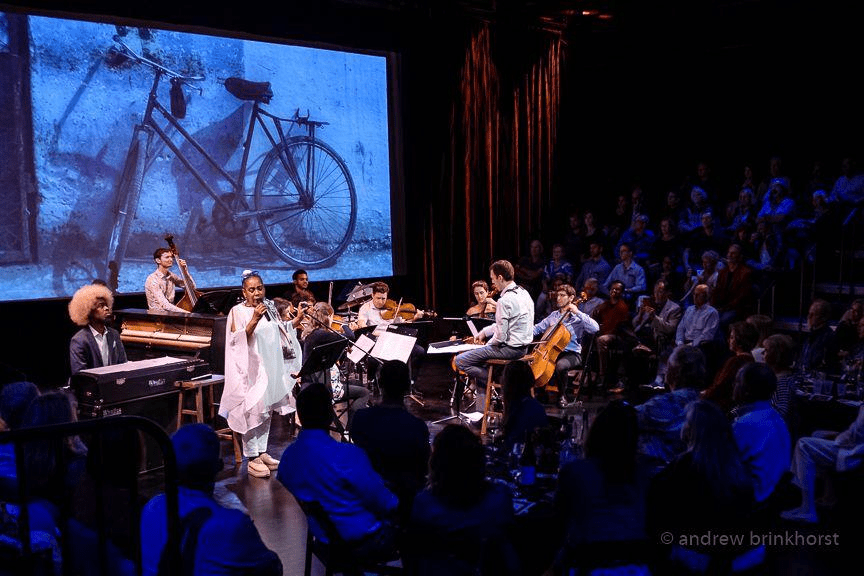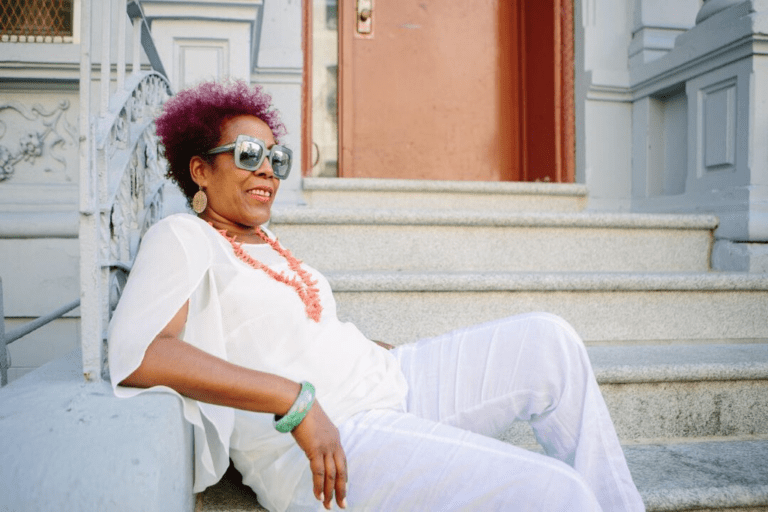Havana Comes to Lexington
Havana Comes to Lexington
By Walter Tunis
September 2024
Flowers and perfume. Xiomara Laugart spells it out in simple terms. As the famed Cuban singer will be celebrating a birthday the day following her return performance in Lexington, she is offering a suggested gift list. You know, just in case.
The remark triggers something as integral to Laugart’s personality as the elegant Trova music that sits at the heart of her vocal work — laughter. She laughs a lot — genuine, warm laughter from the heart. It’s the sound of someone at peace with her world, even though her world of the last few decades has taken her far from her homeland in the Guantanamo province of Cuba.
On Sept. 7, Laugart and her son, acclaimed pianist Axel Tosca, make their way back to another home of sorts – — Lexington. She and Tosca have played here twice before. The first was a weekend engagement in the fall of 2018 that piggy-backed a performance for the Festival Latino de Lexington at the Robert F. Stephens Courthouse Plaza onto a more intimate set at Tee Dee’s Lounge the next evening. They returned the following May to perform at the then-named Downtown Arts Center.

Both outings, along with the return Sept. 7 show at the Mitchell Fine Arts Center of Transylvania University, were spearheaded by Green Room Exchange, the Lexington-rooted organization led by Lee Carroll and wife Connie Milligan. The organization is designed to allow artists from other cultures to share their art, as well as engage personally with local audiences.
“I think Xiomara Laugart is an absolutely amazing artist,” Carroll said. “When I explain to people what kind of music she sings, I say it’s sort of like the Great American Songbook, but the Cuban version. Mostly what she sings are traditional Cuban songs. They’re great songs, but her interpretations are so profound and so deeply emotional. And then Axel is just a freakin’ genius. He is one of the best piano players I’ve ever heard. He’s a complete natural.”

Xiomara Laugart
For Laugart, the effortless and elegant undercurrents of her singing are a matter of communication, an exchange continually fortified each time she has played in what has served as home since 1998, New York City. Roughly six months after her arrival, she set up a performance residency at the Greenwich Village jazz club known as the Zinc Bar that continues to this day. She performed there the night before our conversation.
“Like yesterday at the Zinc Bar, this young girl told me, ‘Oh my God, your voice,’” Laugart said. “‘Where have you been?’ I said to her, ‘Right here. I’ve been here all the time.’
“I remember also playing to some young people from Canada. Very young people — three couples. And they were like, ‘This is the first time I’ve been in a jazz club.’ I went ‘Really?’ They said, ‘I didn’t know it was like this.’ I said, ‘Yes, honey. This is jazz. Come back. Bring your friends.’”
A new home
Curiously, Laugart’s move to New York was not the result of direct emigration from Cuba. Initial college studies were in economics, but a love of singing in the poetic Trova style and eventually the more protest-oriented Nueva Trova led to performances overseas. Everything halted, however, in the mid-’90s when promised work in Italy fell through.
“It was a job that didn’t work out,” she said. “The guy we made the deal with was having problems with drugs. When I arrived in Italy, he wasn’t there. He was in an institution trying to clean up himself. I think in the end he died. Everything finished very tragically.
“So that was it. I was in a park. I was supposed to go back to Cuba the next day, back to Havana. Then this girl found me sitting there. She took me to her house, and found me a job.
“I was cleaning houses, ironing pants and shirts. I made my money like that. After that, I put together a band and began to find agencies, then agencies found me singing jobs. I began to travel and do concerts at parties and all that. Eventually, I had to decide to either stay in Italy or go back to Havana. So, I decided to stay. I stayed for two years. Then this woman said, ‘You want to come with us to the United States for the Massachusetts Festival for the Arts?’ And I said, ‘Yes.’ She asked if I had a passport. I had it with me and I gave it to her. Within a week I had a visa and I was here in America.”
Among the first prominent artists Laugart met upon her move to New York was Venezuelan musician/producer Andrés Levin. That alliance eventually sparked work in the Latin fusion band Yerba Buena.
“Yerba Buena came into the picture because I was working in this trio with a friend of mine. She knew Andrés. I was working in New York. Not long after arriving — maybe one month, two months — she said to him, ‘This woman has to sing.’ He said, ‘Okay. Bring her to the studio.’ I went to the studio, and I remember the first job I had was doing a chorus in a song by the singer from the group Mecano (Ana Torroja). She left the group and began to sing by herself. So, I sang on her first solo record (Pasajes de un Sueño in 2000). Andrés Levin was the producer. After that, he began a group himself. He said, ‘We’ll put this band together and after that, when the band is known by everybody, we want to develop careers for each of you. We want to develop your musical personality.’ In Yerba Buena, everybody had their own career, their own projection. But Andrés wanted to do it together first.
“In the end, it didn’t work. It went to hell, but it was fun.”
From Cruz to Zinc
Upon the folding of Yerba Buena, Laugart found herself off-Broadway in 2007 honoring one of the most heralded Latin artists of the last century, Celia Cruz, in the musical Celia: The Life and Music of Celia Cruz. The production would eventually take to the road and tour well into the following year.
There was only one problem. Laugart wasn’t terribly familiar with Cruz’s music when she landed the role.
“I met this lady who had come to see one of my performances with Yerba Buena. Her company would find work for Latinos on Broadway or in the movies in L.A. She called and said, ‘Go to this address on Broadway and audition.’ I went to the audition, but I didn’t know any songs by Celia. They told me to sing, so I sang. They loved my voice. They gave me a lot of recordings and I began to learn all these songs. They said, ‘We have everything by Celia Cruz. The recordings. The books. Everything Celia.’ After that came the table work where you read and discuss the play. And sing.”